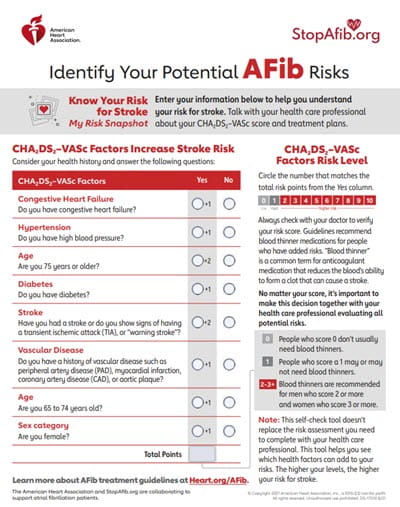Treatment Guidelines of Atrial Fibrillation (AFib or AF)
Video: Work with your health care team for the best outcome
What are the treatment guidelines for atrial fibrillation?
Medical guidelines are written by a panel of experts to document the science that helps healthcare providers choose the right treatments. The guidelines spell out what is proven most helpful to the greatest number of people. Although the guidelines for atrial fibrillation are about 170 pages long, there are some basic decisions outlined in the treatment guidelines that every AFib patient should understand.
- How will I prevent stroke?
Depending on your risk, you will likely either need some type of antithrombotic medication (such as warfarin, one of the new direct-acting oral anticoagulants or DOACs – dabigatran, apixaban, rivaroxaban or edoxaban) or maybe aspirin. - Do I need anticoagulant therapy?
Are there additional lifestyle modifications important for stroke prevention? What is my CHA2DS2–VASc risk? - Congestive heart failure
- Hypertension
- Age (75 or greater)
- Diabetes
- Stroke (prior episode)
- Vascular disease (prior heart attack, peripheral artery disease or aortic plaque)
- Age 65-74
- Sex (female)
- Are there options to control my heart rate and this irregular heart rhythm?
Based on your past medical history and risk for having a future stroke, there are several options for you and your healthcare provider to discuss in order to manage your AFib.
Download: Identify Your Potential AFib Risks (PDF)







